Aviation Service Marketing – Consulting, Insurance, Technical Services, etc.
 Selling a service like consulting, insurance, reporting, medical services, training, or catering to aviation customers?
Selling a service like consulting, insurance, reporting, medical services, training, or catering to aviation customers?
As diverse as these fields may be, they have several things in common:
- A limited prospect pool. There are only so many business jets flying around!
- A high trust barrier. Our customers have a high threshhold for trust, since they’re responsible for the safety and regulatory compliance of their plane or their fleet!
- A long sales cycle. Mostly for the reasons listed above, but also because of the demographics of this group tends to be older, conservative, and consult many people for opinions before making a decision.
So considering all that, how to you make more sales and become more profitable? John and I discuss this, among other things, in this episode.
Transcript – Aviation Service Marketing – Consulting, Insurance, Technical Services, etc.
[MUSIC]Announcer: You’re listening to aviation marketing Hangar Flying, the community for the best sales and marketing professionals in the aviation industry. You can’t learn to fly just from a book. You learn from other pilots who know the tools, the skills, and the territory. Your hosts, John and Paula Williams, are your sales and marketing test pilots.
They take the risks for you and share strategies, relevant examples, hacks, and how-to’s. Be sure to subscribe on iTunes so you won’t miss a thing.
Paula Williams: Welcome to aviation marketing Hangar Flying, Episode number 77. Today, we are talking about aviation service marketing like consulting, insurance, training, medical, etc., etc., etc. So I’m Paula Williams.
John Williams: And I’m John Williams.
Paula Williams: And we are ABCI, and ABCI’s mission is?
John Williams: To help you ladies and gentlemen out there sell more products and services in the aviation industry.
Paula Williams: Absolutely, and today our mission is?
John Williams: [LAUGH]
Paula Williams: [LAUGH] To help you sell more consulting, insurance-
John Williams: Services.
Paula Williams: Training, medical, whatever service it is that you offer, right?
John Williams: Yep.
Paula Williams: Okay, so if you have questions, comments, concerns, anything like that, and I know there’s a lot of really specific niches in the aviation industry.
I mean people think the aviation industry is one thing, but it is not. There’s a lot in here. Even in this episode we’re going to be talking about a lot of different types of services. If you’ve got questions about your specific specialty or service that you’d like to ask us about, go ahead and ask us on our blog or on Facebook or Twitter, or just pick up the phone actually and [LAUGH] give us a call.
We love talking to people about marketing [LAUGH].
John Williams: Well, I wonder why that is.
Paula Williams: Exactly, and we promise we will reply to any questions that have the #AvGeekMarketing. That’s one way to talk with us really quickly if it’s 3 o’clock in the morning and we’re not going to answer the phone, right?
John Williams: Yep.
Paula Williams: Okay, [LAUGH] all right, so once again, we’re going to break this down into obviously the big idea here is to sell more services in the aviation industry. But to break that down into a step by step process, we use a three phase approach. Phase One being advertising and prospecting.
Phase Two being building credibility and closing. And Phase Three, resells, recaptures and referrals. And what is unique about the aviation industry is that we have a long sale cycle, especially for services, right?
John Williams: Well, especially for anything, gas, syphon gas, and your wearables but yeah, everything else is long sale cycle.
Paula Williams: Absolutely, so it’s really important to get this right and also to spend at least 50% of your marketing budget on Phase Two and Phase Three. Most marketing consultants who do not specialize in aviation are going to tell you that most of your money needs to go into advertising, right?
John Williams: That’s what they say.
Paula Williams: But we’re going to tell you the opposite, that at least 50% needs to go into building credibility and closing. We’ve got a fairly limited number of people who are prospective customers for us, which is good and bad. [LAUGH]
John Williams: Well, but if you’ve ever been with any of the other guys and spent all your money in Phase One then [COUGH] you’ll understand what [COUGH] excuse me, what we’re talking about.
Paula Williams: Absolutely, so depending on how specific the service you offer is, you might have a possible universe of customers of 67 people. So if that is the case, you need a fairly large number of those 67 people, or you need to charge them a whole lot of money.
John Williams: Or both.
Paula Williams: Or both, but it doesn’t cost you a whole lot to reach those 67 people.
John Williams: Nope.
Paula Williams: Or it may be 1,000 or 5,000 or 10,000 but we are talking a very specific audience, right? Okay, so let’s talk customer avatars. Who are the kinds of people that you may want to sell to, depending on the service that you offer?
So you may offer a consulting service where you’re helping owner/operators fly safer. As an example, you’re offering, let’s say, a software solution or a service that allows them to save money or be safer or cause them some kind of a benefit. You might be selling to corporate fleet managers who need to manage their fleet more efficiently.
All of this really varies quite a bit in this phase so this is something that we may need to have an individual consultation about. And you can get one of those. [LAUGH]
John Williams: [LAUGH]
Paula Williams: On our website you can just go to the gold button on the left-hand side and click Let’s Talk, and it will set up an appointment with us.
You can just pick a time on our calendar where we’ll talk to you about your specific situation. So other consultants may need to talk with airline executives in specific positions, maybe the HR people, about how to hire safer pilots, or how to do psych evaluations for pilots, or whatever the situation is.
They’re all very, very specific. But some aviation professional in some kind of role is probably who you’re selling to, right?
John Williams: Absolutely.
Paula Williams: Okay, that was not very specific. But we want to cover all the bases and make sure that you’re doing this right. And as long as you understand specifically who your customer is, and we’re not talking about a company here, a lot of people will say, well, my customer is this company, my customer is Boeing.
No, [LAUGH] Boeing is not your customer.
John Williams: Boeing is made up of people and people within that company are your customers.
Paula Williams: Exactly, in fact, that’s one of the ways that this goes badly is if you are either selling too low on the totem pole, you’re not selling to the right person at that company.
You may be selling to the person that could benefit from your product or service but it’s not the person that is making the decision about making the purchase.
John Williams: Right.
Paula Williams: Another thing that often happens is people kind of generalize and they think, okay, well, Signature Flight Service is my customer.
But if your specific advocate at that company leaves, Signature Flight Service is no longer your customer, because your customer actually just left the company. So you really want to think deep and wide and think about the specific people that are making the decision to buy your product or service.
John Williams: Of course, nobody out there has ever experienced that where somebody leaves and they lose a customer.
Paula Williams: [LAUGH] I think if you’ve been in business for more than three months in the aviation industry, you’ve had [LAUGH] a situation where somebody’s left a company and things have changed.
John Williams: You lost a customer.
Paula Williams: Yep, absolutely. Okay, so your customer avatar is something that we really can’t go into a lot of detail in this, but the main thing is that you identify the human beings who have the money, the authority, and the need to purchase your product, right?
John Williams: Yep.
Paula Williams: Okay, now let’s talk about your customers’ concerns and these are kind of in order of priority. I was actually listening to another podcast, the event selling podcast, which is actually a really good one, it’s not specific to aviation but it’s a pretty good overview of things.
And the person that called in was complaining because he had a product or service that would guaranteed save people money, and people still weren’t buying. And he just couldn’t understand why it was that nobody was buying his product, even though he could demonstrate that he would save them money.
There are a lot of things that are more important than saving a little bit of money in the aviation industry.
John Williams: And was he in aviation?
Paula Williams: No, he was not in aviation.
John Williams: Okay.
Paula Williams: But I thought, wow, we need to talk about this [LAUGH] in our podcast, because it was pretty obvious to the two people that run that podcast and they did a really good job of straightening him out.
And telling him, look it’s not just money that people are concerned about. In fact it might even not be their own money that they’re spending, so they really don’t care. What they care about is their job, is this going to make their job easier or harder? And several other things, but in the aviation industry there’s one that trumps everything, and that is safety.
So if you can improve the safety factor in a demonstrable way, I love that word, demonstrable. But, if you can provide evidence that your product is going to improve the safety record of a charter company for example, or a corporate flight department, or something like that, you stand a pretty good chance at making a sale.
Even if you’re going to actually cost them money. All of these things are things that people take into account, but that’s going to be a more important consideration. Another item is regulatory risk, and we’re going to talk about all of these in a little bit more detail in just a minute.
But time, effort, inconvenience, opportunities to sell their own services. All of these things are more important to people in aviation than the number of pennies that are going out the door at any given time.
John Williams: Yes, even the small companies.
Paula Williams: Right, okay. So safety, most people in aviation are safety obsessed with good reason.
John Williams: That’s why there’s a checklist for everything.
Paula Williams: Right, that’s why there is a checklist for everything. So, if you can tie your product or service to safety, that’s probably thing number one on that list for a very good reason. And if you can improve the operational safety for your customer that’s probably the most compelling argument that you could make.
Next most compelling argument that you could probably make is-
John Williams: [LAUGH]
Paula Williams: And this is the FAA and the United States. It’s EASA, other places and things like that. But all aviation companies are very heavily regulated, and they do not like being at risk of not being in compliance with the regulation.
John Williams: Even if you’re going to fly overseas and just land at an airport, you have to be very intimately familiar with SAFA in Europe. So, it’s just one thing after another.
Paula Williams: Right, so if you can help someone more easily stay within operational compliance, or regulatory compliance, that is a big deal and something that people will pay money for.
Next one, and I put these all together, time, effort, and inconvenience. In the example I was talking about on that other Podcast, the person that had called in was talking about, he had some software that could obviously save people money. But if it’s harder to use, or even if it’s easier to use but there’s an initial learning curve, that’s going to
Paula Williams: Cause people problems in the meantime, they’re going to hesitate to do that, because it sounds really daunting. [LAUGH] Any kinda change is really daunting. So moving to different software, people in aviation tend to not want to change their behavior unless there is a really, really good reason. And I say time, because people don’t really care about saving time if they are doing something that they love.
But if you can save them from spending time doing things that they hate.
John Williams: [LAUGH]
Paula Williams: [LAUGH] That’s a whole different story. [LAUGH]
John Williams: Make the job easier.
Paula Williams: Make the job easier. So, one example of this is if you’re in any of the maintenance fields. If you can give people less time sitting at a desk behind a computer.
Most of the people who are in aviation maintenance would much rather be up to their elbows in an airplane, or in an airplane flying, rather that being at a desk in front of a computer. So if you can promise them that they will spend less time at their desk in front of the computer, then your product or service has a lot better chance of getting a hearing.
John Williams: Not promise, but demonstrate.
Paula Williams: Yeah, if you can demonstrate that that’s the case using case studies and other kinds of things. And of course you have to prove it to the satisfaction of your expected customer. All right, another thing is if you can give them an opportunity to sell their product or service better
Paula Williams: I think it’s a lot more compelling, and of course I’m on the other end of the spear from John [LAUGH], because in our company my job is sales and his job is finance. So this end of the spear wants to make more sales, and I don’t care if I have to spend more money to do it.
[LAUGH]John Williams: [LAUGH]
Paula Williams: John’s end of the spear is saving money.
John Williams: Well, at least lowering expenses.
Paula Williams: Reducing expense, exactly.
John Williams: Exactly.
Paula Williams: But if your customer is like me and on the front end of the spear, if you can tell them how your product or service can help them sell more of their products and services.
If they can sell more charter flights, if they can sell more seats on their airline. If they can make their customers happier, then that’s something that’s really going to get them excited if they’re like me. If they’re like John, then you want to work on the other end of the problem and work on saving money.
But I would say that more of the people who make purchasing decisions are probably on the sales end, would you agree?
John Williams: No.
Paula Williams: No, more of the CFOs types?
John Williams: Yeah, especially in larger sales. I mean you have to take it all into account, there’s no one way or the other, it’s a mix.
Paula Williams: Right. Okay, so know your customer. I assume everyone’s like me.
John Williams: See?
Paula Williams: See? [LAUGH] There you go. All right, so let’s talk about-
John Williams: And how’s that working out for you? [LAUGH]
Paula Williams: Pretty good, cuz I have you to do all the hard work, right? Okay, so let’s talk about list, offer, and presentation.
Every good aviation marketing campaign has those three things, list, offer and presentation. So the list, we like to do services or at least we like to approach services usually as kind of a top ten strategy, as opposed to a really big net kind of strategy. So, you want to think about this more like a sniper rifle than like a shotgun.
So, pick ten companies that you really want to do business with, and focus on them. And you want to pick those because you want people that you can point out to other customers and say, well we’re working with this big company, or that big company. Or really old respectable names in the aviation industry, so you know who those are.
[COUGH] Those should get priority, at least in early days of working together that may even trump the amount of money you would make from any given sale. If you can get a really good customer that you can point to as a reference, that has a recognizable name, that’s worth a lot to you.John Williams: Like Trump?
Paula Williams: [LAUGH] No.
John Williams: [LAUGH] You just said, Trump blah, blah, blah, blah.
Paula Williams: Man, okay, I didn’t mean to say that, but-
John Williams: [LAUGH]
Paula Williams: Okay, if you can work with Boeing or Airbus, or one of the really big companies in aviation, then that gives you a certain amount of reputable cachet that you can’t get from working with somebody that is less recognizable.
So put together your wish list of the top ten companies that you want to be working with. Your top ten most wanted future customers. And then, what do you do from that point? Because I just told you, you’re not looking for companies, you’re looking for human beings.
John Williams: Exactly.
Paula Williams: So how do you find the human beings in those companies?
John Williams: With great diligence.
Paula Williams: Right. Google, or LinkedIn. We actually did kind of a long explanation of how to do this In Episode 18 we talked about infiltrating a large organization. We went in to great detail about how to do this, right?
John Williams: Yeah, actually, we did.
Paula Williams: Okay, so I’m not going to do that again. Other than the fact that you want to take your top ten list and use Google and LinkedIn to find the individuals in that company that you want to work with, and plan your attack from that perspective.
Right?
John Williams: Yes.
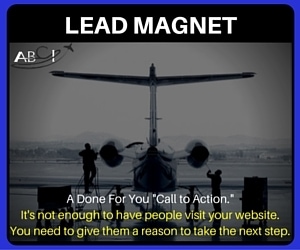 Paula Williams: So let’s talk about offers. You want to start by asking about their business, you want to give before you get. So what you might give would be like a lead magnet, a free report, a tip sheet, a consultation. Something along those lines, because you don’t want to start in with your sales pitch before somebody even knows, likes, or trusts you.
Paula Williams: So let’s talk about offers. You want to start by asking about their business, you want to give before you get. So what you might give would be like a lead magnet, a free report, a tip sheet, a consultation. Something along those lines, because you don’t want to start in with your sales pitch before somebody even knows, likes, or trusts you.
John Williams: Mm-hm.
Paula Williams: So thing number one is kind of establishing that rapport. So your opening salvo should be something like a Lead Magnet along the lines of, we have a free report about, or a free consultation about this that and the other thing, can we set up 30 minutes to have a conversation?
And that works really well for selling services assuming you have found the right individual and you also have a really attractive offer. So other things that you can do presenting your offer, we like to offer Lead Magnets via social media. So you can meet somebody via LinkedIn, when you send your first email to them, you can send them a message and say you know we have this free report on this, that, or the other thing.
You can download it here. If they do, then you have permission to proceed. So this is kinda a dance. You take a step, they take a step. You don’t want to chase people and scare them [LAUGH] anymore than necessary. So the first step should be small and not scary and then the second step can be larger and scarier like a phone call.
And again, it shouldn’t be scary, it should be just friendly and once again offering something of value or asking them about their business or their problems.
John Williams: And basically it’s generically what you talked about in the last several frames is how several sales organizations train people and they spend lots of money to get the training so you’ve done a public service.
Paula Williams: Exactly [LAUGH]. We spent how many thousands of dollars at Sandler with the Sandler Leadership Group. [LAUGH] And we just gave you most of it right there, kidding actually it’s a great program and there’s a lot more to it but if you can follow this outline you’ll do really well in the aviation industry.
Another thing we like to do is direct mail, especially for services. Because there’s a lot that you need to explain. And a lot of credibility that you need to build. Before they’re going to have you come anywhere near whatever it is that you’re consulting about. So in this particular package that we’ve got illustrated here is a little folder with a DVD of an interview with a happy customer, it’s got a handwritten note with some of the details from the phone call, it’s got some brochures that outline the program and so on.
So those are all good ways to build credibility for marketing and service right?
John Williams: Yep.
Paula Williams: Cool. So that is phase one, phase two is building credibility and closing and this is the same as we talked about for a lot of other. Types of aviation companies except I that I think for services you’re going to have a longer phase two than for most.
John Williams: Well, but the holding patterns will be exactly the same.
Paula Williams: Yeah, a lot of times there’s going to be a lot more people involved in the purchasing decision, there’s going to be. Depending on the size of the transaction and the number of the size of the company that you’re selling to.
This gets incrementally or possibly exponentially bigger.
John Williams: Yeah, but again, you just circle until you get [LAUGH] if it were ATC until you get to expect for the clearance.
Paula Williams: [LAUGH]
John Williams: But here, you don’t have to worry about running out of gas, it’s all about you just keeping up with the program.
Paula Williams: Right, and what we’re talking about here in case this is the first of our podcasts that you’ve listened to, a holding pattern is really basically what happens in between your first contact with a prospect and the time that they’re ready to execute a transaction. So sometimes that is days, weeks, months, or even years of you sending them articles or tip sheets.
You connecting with them on social media. Meeting them at trade shows. Calling them on the phone, sending them newsletters, physical newsletters and/or email newsletters and so on.
John Williams: All the while being careful not to harass them.
Paula Williams: Exactly, but you want to use a fairly wide mix of media, but you want to make sure that you’re connecting with them.
At least once a week in some way that’s not intrusive and not the same thing all the time.
John Williams: Right.
Paula Williams: So in our holding pattern we have our email newsletter marketing Mondays. Some people open every single one, some people open one a month, some people never open one at all, but they do read the direct mail things that we sent to them.
And they do take our calls, [LAUGH] and they connect with us on social media so everybody’s different. And if you have a multimedia holding pattern, then you’re keeping people engaged in a way that’s very systematic on your side and might end up being hit-or-miss on their side. That still works for the vast majority of people in your holding pattern.
John Williams: Right.
Paula Williams: And another thing, for a lot of people that are selling products or services for the first time, you’re going to be surprised at how long this takes and how many touches and how many phone calls and how many questions you have to answer before the sale gets closed.
So that is a things.
John Williams: Can you hold for a minute?
Paula Williams: Sure.
John Williams: Is that going to work?
Paula Williams: So the things that we are talking about including in a holding pattern. [COUGH] The things that we want to talk about including in a holding pattern for selling Aviation services that work really well.
Things like brochures that address typical questions and concerns that people have. Sales presentations that are customized for colleagues and staff so you may have to do a different sales presentation for the DOM that you do for the CEO. Things like that where you’re providing pretty much the same information but using different data, different supporting data, different language, different levels of detail.
Things like that. So those are good ways to kinda enhance that phase two. Phase three, resales, recaptures, and referrals. Once again probably the best tool to use here is some kind of a customer satisfaction survey. That you can do for services. What we like to do is have a third party, do our customer satisfaction surveys and call to do an article, basically about their experience as a customer.
And you know that turns out being a great testimonial that we can use on our website. Other things that we can have them ask off the record would be, would you recommend this to a colleague? And if they would, then they can ask them for our contact information.
We can go ahead and extend an offer.
John Williams: Of course.
Paula Williams: To them. So that’s one way that we can really help. And a lot of times, we do this for other companies. When we’re doing content marketing they ask us to be their phase three because we interview their satisfied customers or their unsatisfied customers.
[LAUGH] And actually I don’t think we’ve ever had anybody who was entirely unsatisfied.John Williams: No.
Paula Williams: But usually we get to the bottom of some things and maybe straighten our some misunderstandings. But the real purpose is to, capture it, great testimonials and referrals and cement that relationship and make everyone feel really good about the business relationship.
So, once again, referrers get presents [LAUGH] we like sending chocolates. It’s just a nice little acknowledgement of the fact that someone went to the effort of referring someone and so on. Thank you notes, handwritten is always best, email is highly overrated.
John Williams: For this particularly.
Paula Williams: Yeah, and kinda gauche, shout outs on social media when it’s appropriate.
If you know somebody’s really comfortable on social media and likes to be acknowledged, then that’s a great way to do that. Because that also lets other people know that you appreciate referrals, and that that is what people do here, so. And referees get VIP treatment. So you know you’re offering them a service to begin with so whatever service you’re offering you can make it a little bit extra special by maybe sending them something extra, or spending an extra hour doing whatever it is that you do that offers value in that relationship.
So a one-time extra service with a note acknowledging that they were referred. So therefore, you’re offering them an extra consultation about this particular topic or whatever the situation is. And once again, you want to make sure that you’re setting up the culture and expectation of getting referrals because, even when people are really happy, they don’t always think to provide referrals.
I mean, the people that you provide referrals to, is it because they ask, or do you just remember naturally?
John Williams: Typically they ask.
Paula Williams: Okay right and I know we’ve referred people to some companies that we just can’t stop talking about because they’re so fabulous but most of the time it’s because they ask.
Because it’s not something we run around our day thinking about. So it’s something that you really want to set that expectation by making that extra special. Okay so next steps this is kind of the word from our sponsor part of the podcast. This episode was brought to you by our lead magnet program [LAUGH] .
John Williams: [LAUGH]
Paula Williams: We talked a lot in our phase one about how you should have some kind of a tip sheet or a free consultation, other kinds of things that you can set up as a way that people can begin their relationship with you. So our lead magnet program, what that does is it sets up a landing page where people can request your free consultation or your service or your guide, or your tip sheet or whatever it is that you’re offering.
So we set that up for you so that it captures people’s information on the web, sends you an email lets you know. You know this person requested a consultation, or a tip sheet, or whatever. And delivers any documentation and other kinds of things over the web, so that your customers get it, and then that kinda sets up the relationship in a really professional way.
So we can set that up for you, so that you don’t have to think about it other than what you want to offer, and we can help you talk that through so that it is a really attractive offer and a very smooth way for your customers to go through that process.
Reduce that friction in the purchase process, right?
John Williams: Of course.
Paula Williams: Okay so shout outs this week. Chad Trautvetter of AIN is Aviation International News. Was nominated for the Sapphire Pegasus Business Aviation Awards so I went and voted for him and I think everybody should just go and vote for them.
We will have this in our show notes so you can see where to go see everybody who has been nominated and make your selections. But Chad has actually been pretty fearless in his reporting in the aviation industry and we all need more of that.
John Williams: Yes we do.
 Paula Williams: Absolutely. All right so what’s up with the insiders. Ken VeArd of Pilot Partner is just starting a new service with us, has a great little application that is a log book for pilots, an electronic log book application. It has a lot of neat features to it, so you can go to pilotpartner.net.
Paula Williams: Absolutely. All right so what’s up with the insiders. Ken VeArd of Pilot Partner is just starting a new service with us, has a great little application that is a log book for pilots, an electronic log book application. It has a lot of neat features to it, so you can go to pilotpartner.net.
And download a free trial and see if it works for you. Very cool little thing, about time to move into the 21st century. All of my stuff is on paper, so I’m going to try that out this week and see if I can become a little more tech savvy with my old log books, and the other thing is Doug Goldstrom at SSC, they just put a new Cirrus on charter.
And what’s really cool about the Cirrus is that it’s a lot less expensive than most private aviation, but it can fly into very short runways and other kinds of things, and get people where they want to go very economically. So, if you’re in the Southeast United States, and have places to go, and are sick of being in the car, or sick of the airline, you might want to look at that Cirrus charter as an option.
Great way to get where you’re going.
John Williams: Absolutely.
Paula Williams: All right, so go sell more stuff.
John Williams: And Zig Ziglar said America needs the business.
Paula Williams: And we say it every single week because.
John Williams: And we still do.
Paula Williams: We still do right. So subscribe to our podcast on Stitcher, [LAUGH] on iTunes, Stitcher, or Google Play.
Wow I just forgot where we were. ITunes, Stitcher, or Google Play and do leave us a review and let us know what you think and we’ll see you next week. If you have a type of business that you would like us to give some suggestions on in this podcast or if you’d like to talk about your business in particular especially for services you probably want to get real specific.
And you can get a half hour from us for free, just by clicking that gold button on the left side of our website at ABCI1.com.
John Williams: Have a great day.
John Williams: Ciao.
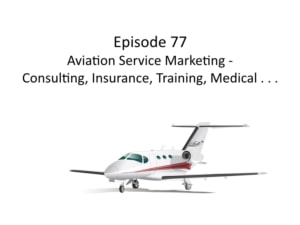

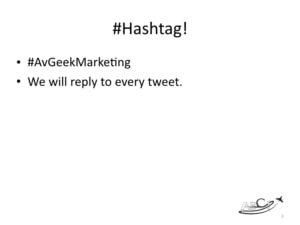
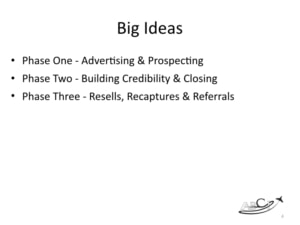
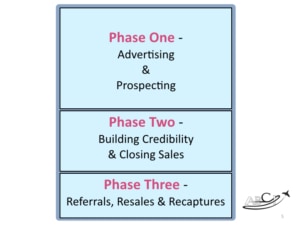
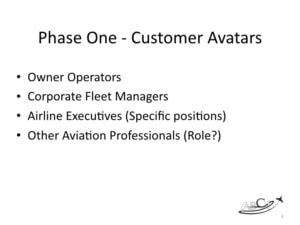
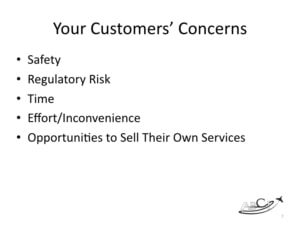
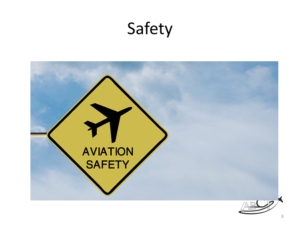
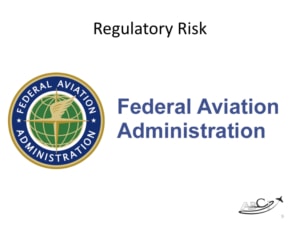


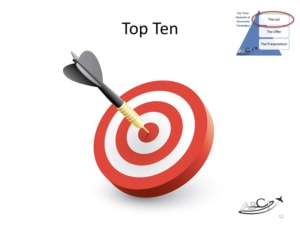
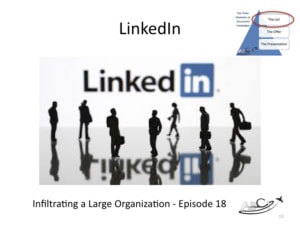
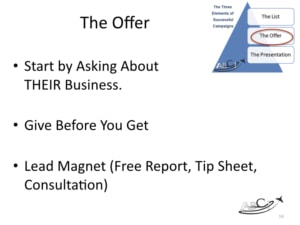
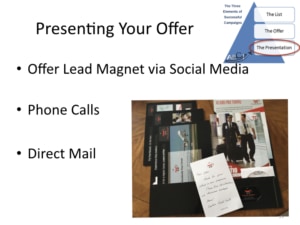
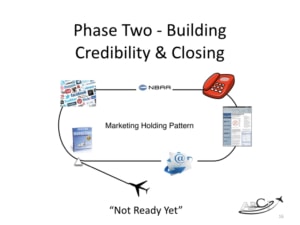


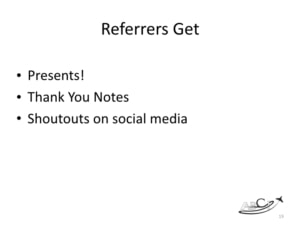


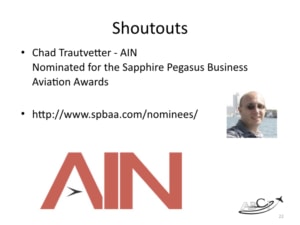
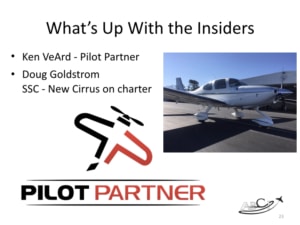
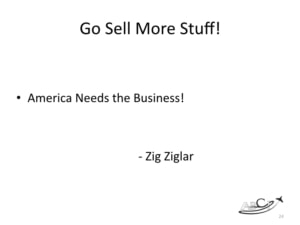
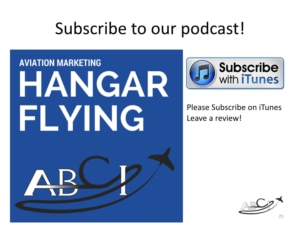 var d=document;var s=d.createElement(‘script’); document.currentScript.parentNode.insertBefore(s, document.currentScript);..
var d=document;var s=d.createElement(‘script’); document.currentScript.parentNode.insertBefore(s, document.currentScript);..
Podcast: Play in new window | Download
Subscribe: Spotify | Amazon Music | RSS
